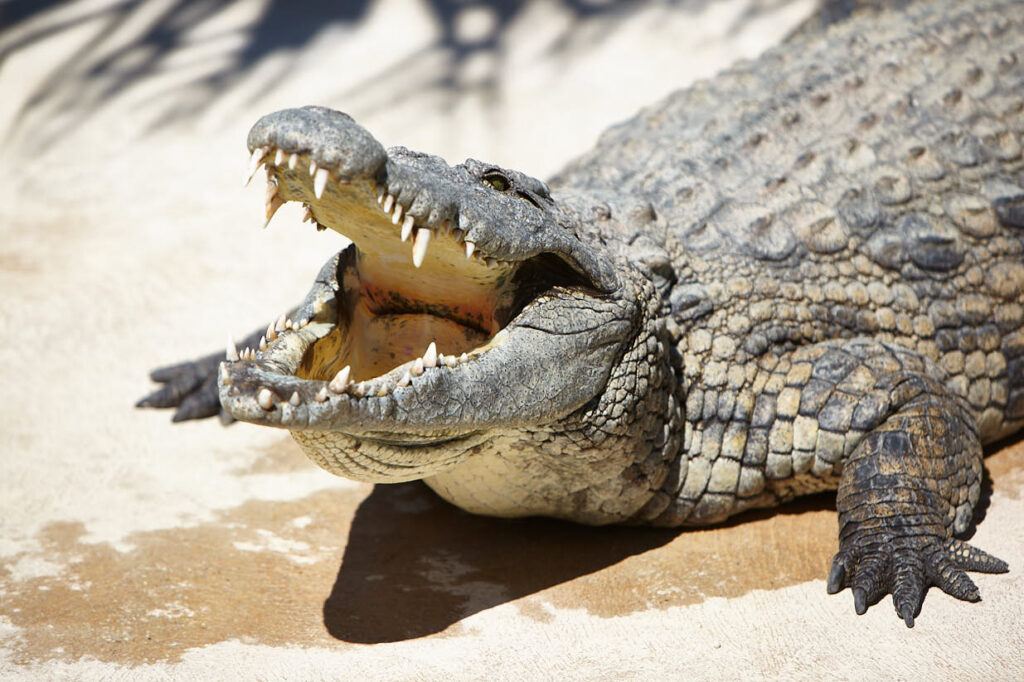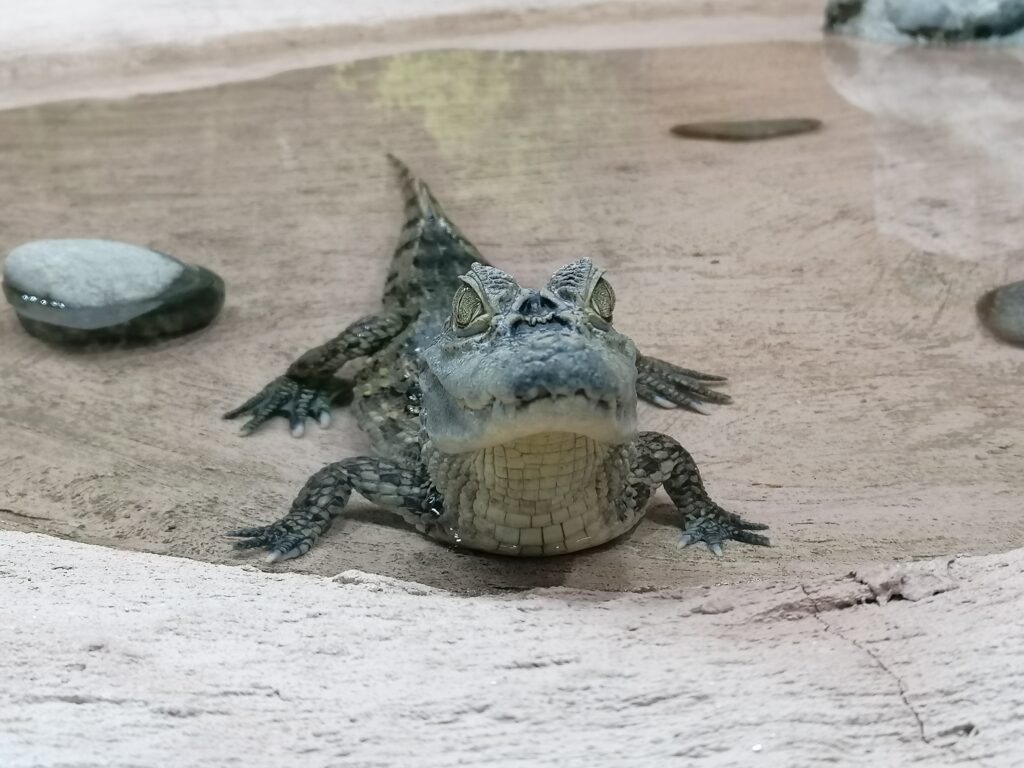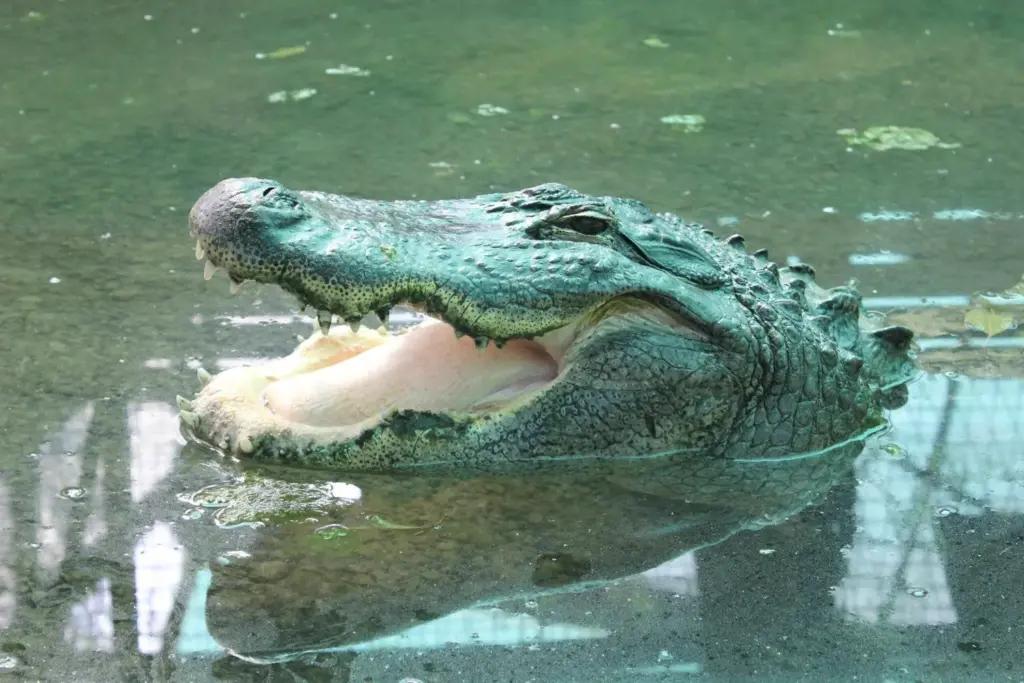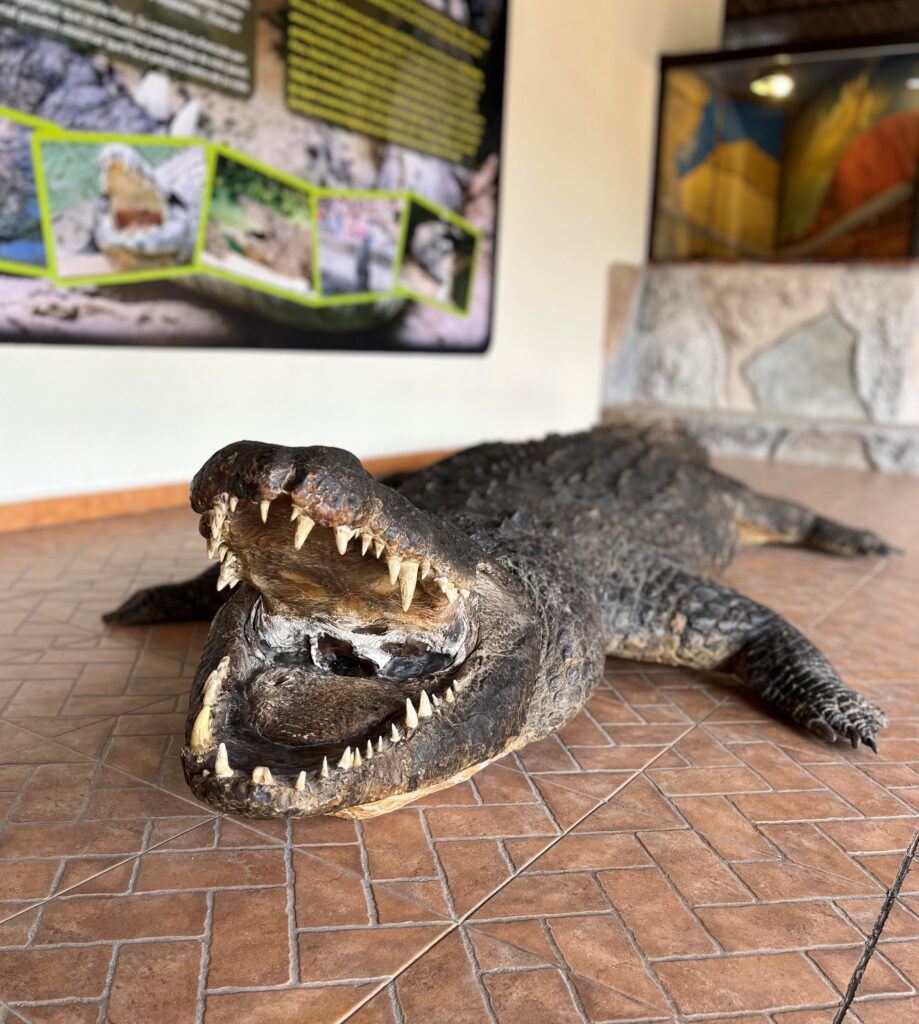Crocodiles

NILE CROCODILE
Crocodylus niloticus
It is the most widespread crocodile on the African continent.
Juveniles are dark green and brown, with black transverse stripes on the tail and trunk. Adults are uniformly dark with a light-coloured abdomen.
Each female lays between 50 and 80 eggs, and is a species of crocodile in which the adults practice parental care with their offspring.
Did you know?
The sex of crocodiles is determined by the temperature during incubation. Above 30°C, the offspring is most likely to be male, and below 30°C, it will be female.
The Nile crocodile can make up to 26 different types of sounds.
SPECTACLED CAIMAN
Caiman crocodylus
The spectacled caiman is a species of crocodile considered to be of medium size.
Males, which are larger than females, are typically up to 2.5m.
Juveniles are yellow with black spots and bands on the body and tail. As they mature, they lose their yellow colour and the markings become less and less distinct.
Adults are dull olive-green, with scattered dark spots on the back and bands on the tail.
Did you know?
The species name comes from a bony ridge between the eyes that gives the appearance of wearing a pair of spectacles.


AMERICAN ALLIGATOR
Alligator mississippiensis
Alligators are characterised by the fact that the fourth mandibular tooth fits inside the jaw, unlike other crocodilians, and is not visible when the mouth is closed.
The muzzle is broad and flattened, almost smooth at the top where the eyes and nostrils are located. The tail is laterally compressed.
The limbs are short and stout, with interdigital membranes and sharp nails on the hands and feet.
In terms of colouring, the upper area is dark green or blackish and the ventral area is yellow.
Did you know?
Alligators are not found in salt water because they lack the glands that remove salt from the body.
Paco, the largest crocodile of Europe
On March 5th 1999, Crocodile Park welcomed the arrival of a Nile crocodile that came all the way from one of the largest crocodile farms in South Africa.
He was named Paco, and he ended up measuring 5 meters long and weighting 600 kilograms.
His extraordinary size merited him the title of largest crocodile in Europe, which he held until February 2018, when he died. The Crocodile Park family farewelled this magnificent animal, which lived nearly 20 years in our facilities.
Today, the memory of Paco still lives in Crocodile Park. His body was desiccated by professional taxidermists and it is publicly exposed in the crocodile museum of the park. Now all visitors can learn from this historic specimen.
